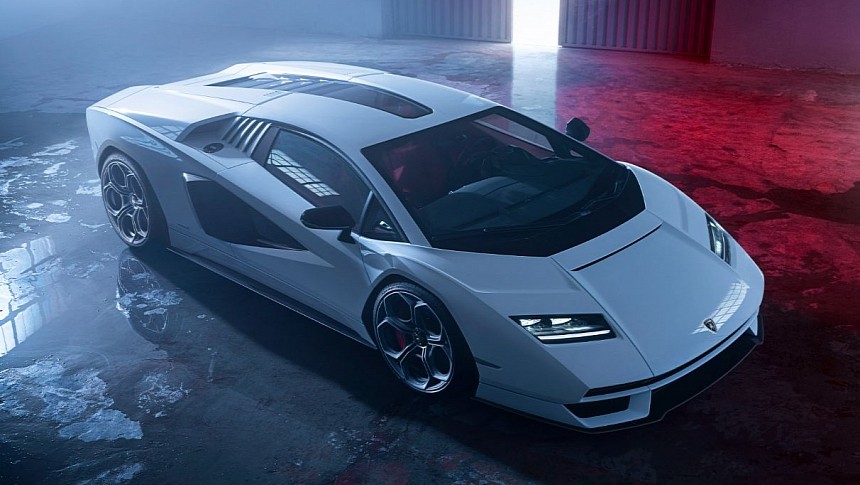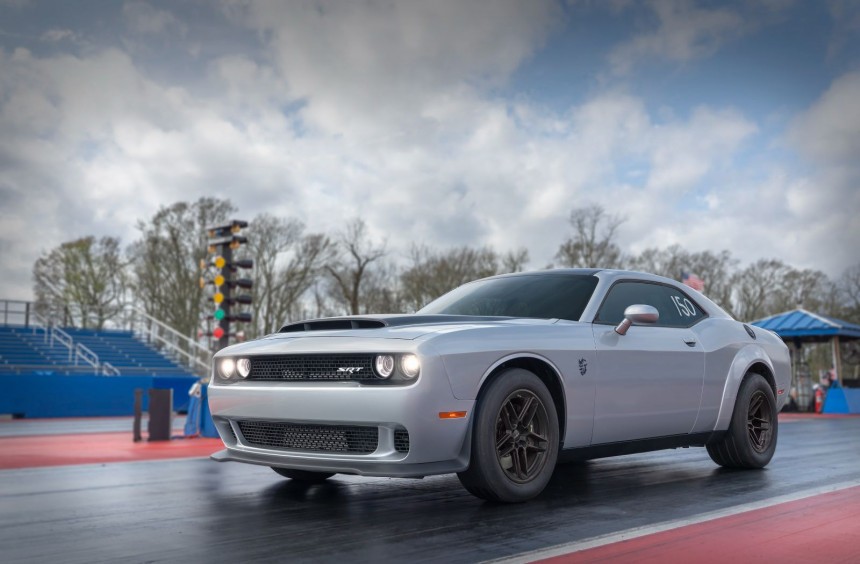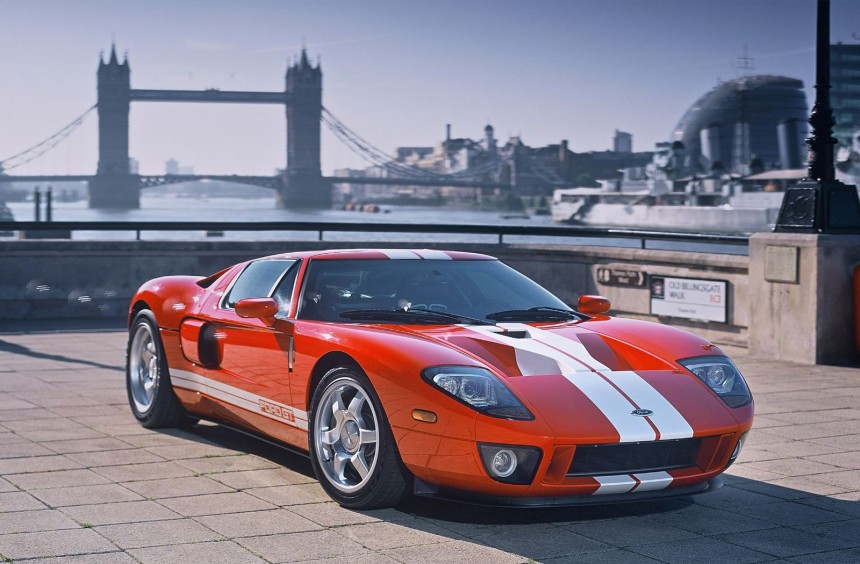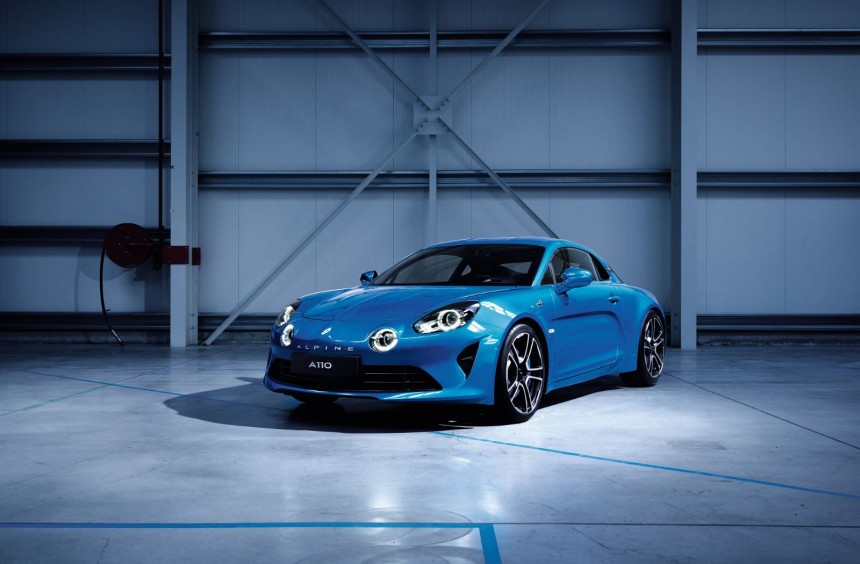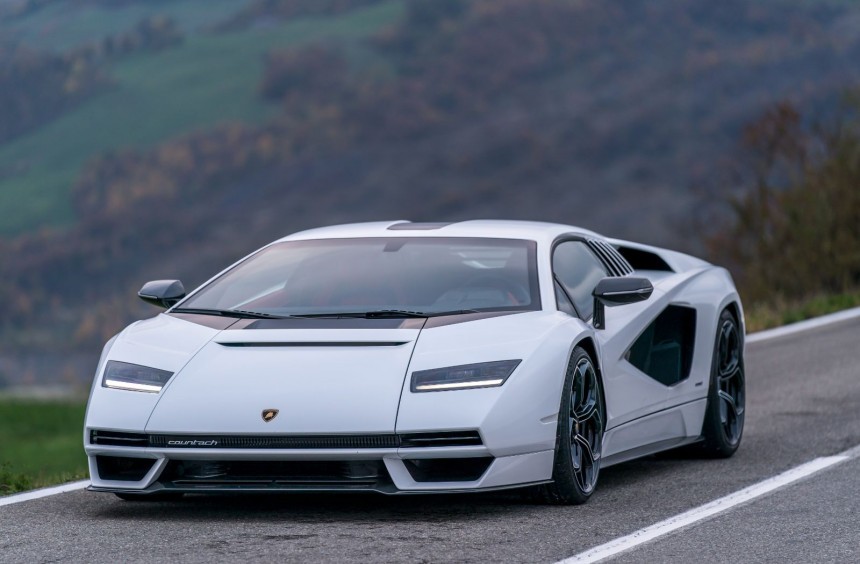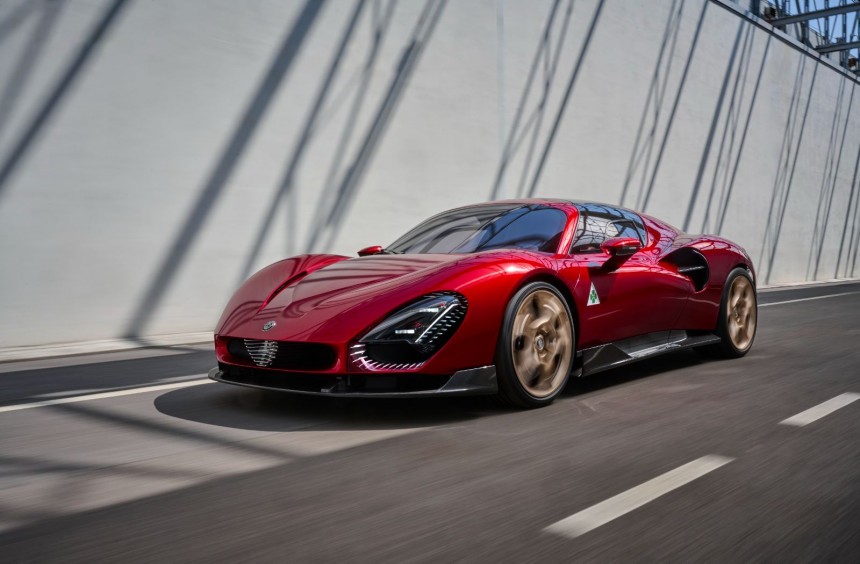In recent decades, many carmakers have tried to bring back some of their most iconic models by reinterpreting their iconic designs. Most failed to live up to expectations, but these five models rose to the same level of gorgeousness and even managed to exceed it.
Taking a once-successful product, refreshing it, and marketing it as something new often backfires.
One example is the movie industry, where, more often than not, remakes of former box-office hits fail to become as popular as the original films.
Of course, this practice has been employed in the automotive industry, too. While some carmakers prefer to slap an iconic nameplate on brand-new models, others choose a more ambitious route.
In recent decades, many companies have decided to bring back not just iconic nameplates but also reinterpret iconic designs by launching some ambitious retro-inspired models.
While many failed to become timeless styling icons like their predecessors, these five models lived up to (and even exceeded) the task.
The first entry on our list was conceived during a renaissance period for original American muscle cars and pony cars.
Ford was responsible for this "back to the roots" trend in terms of design and performance, with its fifth-generation Mustang introduced in 2005.
Three years later, Dodge followed suit with the third-generation Challenger, which, unlike the rebadged Mitsubishi Galant second-generation, brought back the beloved design of the original model, giving it a modern spin.
The result was a gorgeous 21st-century muscle car that only got better with styling revisions and ever-more-powerful engines like the legendary Hellcat.
The third-generation Challenger will be discontinued after the 2024 model year, making way for a brand-new, retro-inspired Challenger that we've recently learned will be available with an ICE (albeit only a six-cylinder has been confirmed) in addition to the electric powertrain that the Daytona SRT concept was initially announced with.
Though not as popular as the modern Mustangs when it comes to sales, the third-gen will go down as a successful reinterpretation of a classic Detroit legend and an all-time muscle car icon.
I only regret that Chrysler didn't sanction a Plymouth Barracuda version, even as a limited-edition, rebadged Challenger.
Besides the fifth-gen Mustang, Ford also revived another icon in 2005: the Ford GT40.
The Ferrari-slaying race car of the 1960s was initially brought back as a 2002 concept, but three years later, the street-legal production version was unleashed on public roads.
Though it shed the "40" in its name, the new car was a nearly identical modern reinterpretation that sent fans into a frenzy.
The Blue Oval's first thoroughbred production supercar was designed by Camilo Pardo under the watchful eyes of J Mays.
Like its spiritual predecessor, the Ford GT received a mid-mounted V8, but unlike the legendary 427 side-oiler, which was naturally aspirated, the new car received a bespoke supercharged 5.4-liter version of Ford's Modular V8.
Good for 550 hp, the modern engine made the street-legal Ford GT more powerful than its race-bred ancestor.
At the 2015 North American International Auto Show, Ford unveiled the second-generation Ford GT. Although it was unquestionably more beautiful than the first iteration, it moved farther away from the GT40, design-wise.
That being said, the first-gen Ford GT remains an epic throwback to an American legend and one of the most beautiful modern reinterpretations of an iconic design.
Though maybe not as famous worldwide as the first-generation Challenger or the Ford GT40, the original Alpine A110 was one of Europe's most popular sports cars during the 1960s and 1970s - mainly due to its impressive motorsport resume and iconic design.
It was developed in the early 1960s by then-independent manufacturer Alpine and used a series of Renault engines in either stock, Gordini- or Lotus-tuned forms.
Alpine was purchased by Renault in 1971, and its motorsport ventures were gradually absorbed into the Renault Sport program. The brand continued to produce Alpine-badged cars, but that ceased in the spring of 1995.
Thankfully, Renault unveiled plans to revive Alpine in the late 2000s, and, after a series of exciting concept cars, the A110 was brought back to life in 2017.
Designed by Deyan Denkov, the new A110 received modern reinterpretations of the styling cues that made the original model beautiful, and the result was an arguably more handsome car.
Apart from being stunning, the revived A110 also benefited from a 21st-century sports car chassis, and, unlike its rear-engined predecessor, it received a mid-mounted engine.
A 1.8-liter turbocharged inline-four, the engine was initially rated at 249 hp but was taken up to 300 hp in the track-focused A110 R introduced in 2022.
Still in production today, the A110 is not only a successful reinterpretation of a classic design that's arguably better than the original but also one of the most beautiful sports cars that money can buy right now.
After the 1966–1973 Miura, Lamborghini decided to take the mind-engine supercar formula to another level with the Countach in 1971.
With a daring wedge-shaped body designed by Marcello Gandini (while at Bertone) and Paolo Stanzani, the Countach became one of the most iconic cars of the 1970s and 1980s.
Throughout its history, Lamborghini only attempted to revive an older model once, but the modern Miura revealed in 2006 never made it past the concept stage.
But, in the fall of 2021, the Italian carmaker surprised its fans with another modern reinterpretation of an iconic model: the Countach LPI 800-4.
Unveiled fifty years after the original LP500 prototype, the new Countach is more distant, design-wise, to its spiritual predecessor than the other entries on this list, but the influences are evident.
From the angular windshield to the side vents and taillights, Lamborghini design chief Mitja Borkert ensured that the original Countach's most iconic features were brought back to life in modern guise.
Like the classic model, the LPI 800-4 features a mid-mounted V12, but since it's a modern Lambo, it also received a mild hybrid system (similar to the Sian) that pushed total output to 803 hp.
The retro-modern Countach is undoutably a great revival that only a few wealthy entiusiasts will get to enjoy since Lamborghini announced that a mere 112 units will be built.
The street-legal version of the Alfa Romeo Tipo 33 race car, the Franco Scaglione-designed 33 Stradale, was produced from November 1967 to March 1969 in only 18 units.
Not only is it one of the rarest Alfa Romeo road cars ever built, but it's also considered by many to be the most beautiful car ever created.
Cues from its design were employed on many modern Alfas, most notably the 4C (2013–2020), but until recently, the Italian brand has never attempted to revive the legendary model.
That changed several months ago (August 2023) when Alfa Romeo surprised everyone with an official modern successor that will carry the 33 Stradale nameplate and timeless design into the 21st century.
The seemingly impossible task of creating a modern 33 Stradale was undertaken by Alfa's own Centro Stile, with Spanish designer Alejandro Mesonero-Romanos heading the project.
Not only did the team manage to live up to the expectations, but it excelled at rebirthing an automotive icon.
Though it's largely based on a Maserati MC20 chassis, the new 33 is a faithful reinterpretation of the original design, and, obviously, it's a strong contender for the title of the most beautiful car designed in the 21st century.
Limited to 33 units, production of the modern 33 Stradale is set to commence next year (2024), with buyers able to choose either a fully electric, three-motor powertrain rated at 750 hp or a good old-fashioned ICE of the 620-hp, twin-turbocharged V6 variety.
One example is the movie industry, where, more often than not, remakes of former box-office hits fail to become as popular as the original films.
Of course, this practice has been employed in the automotive industry, too. While some carmakers prefer to slap an iconic nameplate on brand-new models, others choose a more ambitious route.
In recent decades, many companies have decided to bring back not just iconic nameplates but also reinterpret iconic designs by launching some ambitious retro-inspired models.
While many failed to become timeless styling icons like their predecessors, these five models lived up to (and even exceeded) the task.
2008–2024 Dodge Challenger
Ford was responsible for this "back to the roots" trend in terms of design and performance, with its fifth-generation Mustang introduced in 2005.
Three years later, Dodge followed suit with the third-generation Challenger, which, unlike the rebadged Mitsubishi Galant second-generation, brought back the beloved design of the original model, giving it a modern spin.
The result was a gorgeous 21st-century muscle car that only got better with styling revisions and ever-more-powerful engines like the legendary Hellcat.
The third-generation Challenger will be discontinued after the 2024 model year, making way for a brand-new, retro-inspired Challenger that we've recently learned will be available with an ICE (albeit only a six-cylinder has been confirmed) in addition to the electric powertrain that the Daytona SRT concept was initially announced with.
Though not as popular as the modern Mustangs when it comes to sales, the third-gen will go down as a successful reinterpretation of a classic Detroit legend and an all-time muscle car icon.
I only regret that Chrysler didn't sanction a Plymouth Barracuda version, even as a limited-edition, rebadged Challenger.
2005–2006 Ford GT
The Ferrari-slaying race car of the 1960s was initially brought back as a 2002 concept, but three years later, the street-legal production version was unleashed on public roads.
Though it shed the "40" in its name, the new car was a nearly identical modern reinterpretation that sent fans into a frenzy.
The Blue Oval's first thoroughbred production supercar was designed by Camilo Pardo under the watchful eyes of J Mays.
Like its spiritual predecessor, the Ford GT received a mid-mounted V8, but unlike the legendary 427 side-oiler, which was naturally aspirated, the new car received a bespoke supercharged 5.4-liter version of Ford's Modular V8.
Good for 550 hp, the modern engine made the street-legal Ford GT more powerful than its race-bred ancestor.
At the 2015 North American International Auto Show, Ford unveiled the second-generation Ford GT. Although it was unquestionably more beautiful than the first iteration, it moved farther away from the GT40, design-wise.
That being said, the first-gen Ford GT remains an epic throwback to an American legend and one of the most beautiful modern reinterpretations of an iconic design.
2017-present Alpine A110
It was developed in the early 1960s by then-independent manufacturer Alpine and used a series of Renault engines in either stock, Gordini- or Lotus-tuned forms.
Alpine was purchased by Renault in 1971, and its motorsport ventures were gradually absorbed into the Renault Sport program. The brand continued to produce Alpine-badged cars, but that ceased in the spring of 1995.
Thankfully, Renault unveiled plans to revive Alpine in the late 2000s, and, after a series of exciting concept cars, the A110 was brought back to life in 2017.
Designed by Deyan Denkov, the new A110 received modern reinterpretations of the styling cues that made the original model beautiful, and the result was an arguably more handsome car.
Apart from being stunning, the revived A110 also benefited from a 21st-century sports car chassis, and, unlike its rear-engined predecessor, it received a mid-mounted engine.
A 1.8-liter turbocharged inline-four, the engine was initially rated at 249 hp but was taken up to 300 hp in the track-focused A110 R introduced in 2022.
Still in production today, the A110 is not only a successful reinterpretation of a classic design that's arguably better than the original but also one of the most beautiful sports cars that money can buy right now.
2022 Lamborghini Countach LPI 800-4
With a daring wedge-shaped body designed by Marcello Gandini (while at Bertone) and Paolo Stanzani, the Countach became one of the most iconic cars of the 1970s and 1980s.
Throughout its history, Lamborghini only attempted to revive an older model once, but the modern Miura revealed in 2006 never made it past the concept stage.
But, in the fall of 2021, the Italian carmaker surprised its fans with another modern reinterpretation of an iconic model: the Countach LPI 800-4.
Unveiled fifty years after the original LP500 prototype, the new Countach is more distant, design-wise, to its spiritual predecessor than the other entries on this list, but the influences are evident.
From the angular windshield to the side vents and taillights, Lamborghini design chief Mitja Borkert ensured that the original Countach's most iconic features were brought back to life in modern guise.
Like the classic model, the LPI 800-4 features a mid-mounted V12, but since it's a modern Lambo, it also received a mild hybrid system (similar to the Sian) that pushed total output to 803 hp.
The retro-modern Countach is undoutably a great revival that only a few wealthy entiusiasts will get to enjoy since Lamborghini announced that a mere 112 units will be built.
2024 Alfa Romeo 33 Stradale
Not only is it one of the rarest Alfa Romeo road cars ever built, but it's also considered by many to be the most beautiful car ever created.
Cues from its design were employed on many modern Alfas, most notably the 4C (2013–2020), but until recently, the Italian brand has never attempted to revive the legendary model.
That changed several months ago (August 2023) when Alfa Romeo surprised everyone with an official modern successor that will carry the 33 Stradale nameplate and timeless design into the 21st century.
The seemingly impossible task of creating a modern 33 Stradale was undertaken by Alfa's own Centro Stile, with Spanish designer Alejandro Mesonero-Romanos heading the project.
Not only did the team manage to live up to the expectations, but it excelled at rebirthing an automotive icon.
Though it's largely based on a Maserati MC20 chassis, the new 33 is a faithful reinterpretation of the original design, and, obviously, it's a strong contender for the title of the most beautiful car designed in the 21st century.
Limited to 33 units, production of the modern 33 Stradale is set to commence next year (2024), with buyers able to choose either a fully electric, three-motor powertrain rated at 750 hp or a good old-fashioned ICE of the 620-hp, twin-turbocharged V6 variety.
